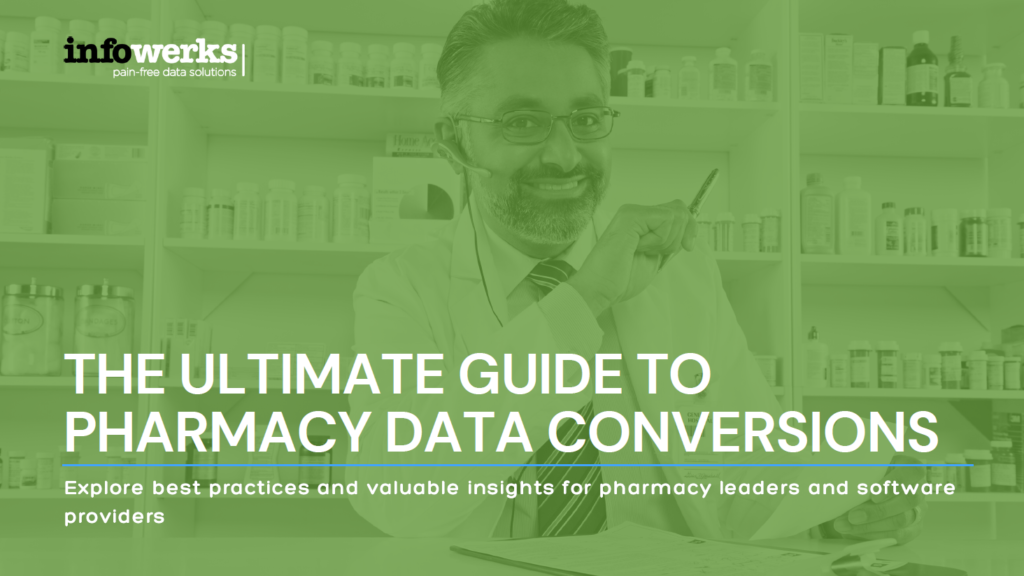
At some point, every pharmacy will deal with converting data. You have the choice to move to a new pharmacy software system at any time. You might change for a number of business reasons, or you may face a software sunset. Regardless of why, there are some specific things that every pharmacy should know, and we’re highlighting them here.
Field Inconsistency Is Common
While your new software likely has the same functionality and features of your current one, field inconsistency is common. Every software treats fields differently. The difference may be in what they call the fields or how the system stores the data. One to one matching is possible some of the time. To ensure your fields map correctly, you should:
- Choose a data conversion provider that has experience with both systems.
- Work with your new software vendor to validate fields.
- Determine if coding is different from platform to platform (i.e., allergy codes).
AR Conversions Can Be Tricky
AR (accounts receivable) conversions are not always straightforward. In most cases, it’s a balance only conversion, not transactional. The type of conversion options depends on the system requirements. Different configurations can lead to duplication. Thus, it’s important to understand how your news system holds this data and converse with those converting the data about any concerns.
You Need a 340B Migration Plan
340B prescriptions have a separate inventory database. You’re not paying for the inventory, but you still must track it. Accurately migrating this data is essential to compliance. Plan ahead for 340B data elements to ensure a seamless conversion.
Purge and Archive for a More Seamless Conversion
In most scenarios, there is data in your current software system that doesn’t need to convert. It’s a good idea to look into purging and archiving.
Purging removes unlinked data or inactive elements. A pre-conversion purge of stale data makes the conversion process much smoother.
Data archiving is another solution to limiting what you migrate. You must keep patient records for a certain amount of time to meet regulatory requirements. However, you can choose to archive those you don’t need for daily operations. You still have access to these for audits or patient requests through a secure portal. They don’t have to live in your new system.
Special Considerations for LTC, Specialty Pharmacy, and Hospital Pharmacy
LTC, specialty pharmacy, and hospital pharmacy use software differently than standard retail pharmacies. If you fall into these categories, there are several elements of which to be aware, including:
- LTC: Converting data from software not designed for LTC into one that does will need additional validation and possible custom programming.
- Specialty: Compounding conversions can be complex. Consult the conversion provider and software vendor to work out any challenges.
- Hospital: If you have an in-patient and retail pharmacy and are converting both, you’ll need to determine what data goes where. This is especially true if you are converting multiple systems into one system.
Manual Data Conversions Are Risky
Converting data with a manual approach is inherently risky. Human error is inevitable. It’s also expensive and time-consuming. While there may be fields you need to validate that requires human interaction, it’s way too precarious to use manual practices for a majority of the converting. Programmatic conversions are more accurate, cost-effective, and compliant.
Learn More About Pharmacy Data Conversions

We’ve outlined some of the most essential things that pharmacies should know before they convert. To go in-depth and get more insights, we’ve got a whitepaper just for you. Download The Ultimate Guide to Pharmacy Data Conversions today!


